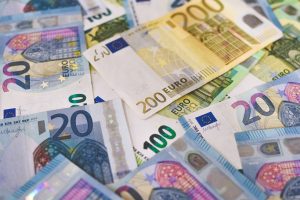The foreign exchange market, or forex, is a global financial market where currencies are bought and sold. As with any market, prices in the forex market fluctuate. These fluctuations can be cyclical, meaning that prices tend to move in a predictable pattern over time. Understanding price cycles in forex can be beneficial to traders, as it can help them anticipate future price movements and make better trading decisions.
So, what is a price cycle in forex? A price cycle in forex refers to the regular pattern of price movements that occur over a given period of time. These cycles can be observed on various time frames, from short-term intraday cycles to longer-term monthly or yearly cycles.
Price cycles in forex are driven by a multitude of factors, including economic data releases, political events, and global market sentiment. These factors can impact the supply and demand for different currencies, which in turn affects their exchange rates.
There are four stages to a typical price cycle in forex: accumulation, markup, distribution, and markdown.
The first stage, accumulation, occurs when traders begin to accumulate a particular currency. This can be due to various reasons, such as positive economic data or a shift in market sentiment. During this stage, prices may be relatively stable or even slightly lower as traders buy up the currency.
The second stage, markup, occurs when demand for the currency increases significantly, causing prices to rise sharply. This stage is often characterized by strong bullish momentum and high trading volumes as traders rush to buy the currency.
The third stage, distribution, occurs when traders start to take profits and sell off their positions. This can be due to a variety of reasons, such as a change in market sentiment or negative economic data. During this stage, prices may plateau or even decline slightly as traders sell off their positions.
The fourth and final stage, markdown, occurs when traders sell off their positions in large quantities, causing prices to fall sharply. This stage is often characterized by strong bearish momentum and high trading volumes as traders rush to sell off the currency.
It is important to note that price cycles in forex are not always predictable and may not always follow the four stages outlined above. Market conditions can change rapidly, and unexpected events can disrupt the normal pattern of price movements.
Despite this unpredictability, understanding price cycles in forex can be a valuable tool for traders. By recognizing the stages of a price cycle and the factors that drive them, traders can better anticipate future price movements and make more informed trading decisions.
For example, during the accumulation stage, traders may look for opportunities to buy a currency at a lower price in anticipation of a markup stage. During the markup stage, traders may look for opportunities to sell their positions at a profit. During the distribution stage, traders may look for signs of a potential markdown and adjust their positions accordingly. And during the markdown stage, traders may look for opportunities to buy the currency at a lower price in anticipation of a potential reversal.
In conclusion, a price cycle in forex refers to the regular pattern of price movements that occur over a given period of time. These cycles are driven by a multitude of factors, including economic data releases, political events, and global market sentiment. Understanding price cycles in forex can be a valuable tool for traders, as it can help them anticipate future price movements and make more informed trading decisions.






